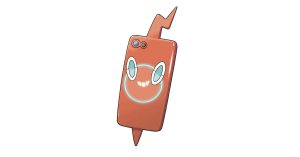What do Decals and Decal Filtering do – Graphics Settings Explained

Wolfenstein: Youngblood
Can I Run It?
Add FPS
Compare GPU
Trailers
Wolfenstein: Youngblood
Have your say
User Review
7.34
Optimisation
6.7
Most Demanding
91
Low vs Ultra Screenshots
Editorial
Read Our Review
|
System Requirements Announcement News
|
Graphics Settings
|
Best Graphics Settings
|
Performance Benchmarks
|
Related News
Decals is a fairly wide-ranging graphics setting which dynamically applies textures over an underlying texture. This can include bullet holes, blood spatter, dust, etc. These will be applied in a pseudo-realistic fashion. Shoot a wall, for example, and a decal of a bullet hole will appear at the point where your bullet struck.
Decal Filtering is a further effect layered on top of Decals. It typically determines the level of Anisotropic Filtering (also known as Texture Filtering) which are applied to the Decals in the environment. Decal Filtering may be a slider, Low/Medium/High/Ultra, or the traditional Anisotropic settings such Trilinear, AF 2x, AF 4x, AF 8x, and AF 16x. The higher the setting, the more oblique the angles at which AF will filter the texture, reducing the amount of blur and preserving the detail of the texture.
For the examples, we’ll start with Decals. I was planning to showcase Call of Duty: Modern Warfare but alas, the beta has ended. COD:MW has a Decal Off option which is really quite noticeable. So instead, we’ve got Wolfenstein: Youngblood. While the Decal setting can sometimes affect the render resolution of the Decals, in Youngblood the resolution remains the same across any setting.
What Ultra actually does it allow for the rendering of more Decals simultaneously. For each of these screenshots I emptied a couple of pistol clips in the wall and there are a few more Decals visible on Ultra. While you can’t tell from the screenshots, when the Decal setting is lowered you can see the earlier bullet holes disappear in front of your eyes as you’re making additional holes.
 |
 |
Body sway was the curse of me for the next screenshots, so you’ll have to excuse the slightly differing angles. However, this comparison is designed to show the effect of Decal Filtering on Decal quality.
As you can see, a number of bullet holes have been made extending away from the player. The higher the level of Decal Filtering applied, the clearer the image quality of the Decals when viewed at a steep angle. You’ll notice the Decals closest to the player on Low are clearest, getting steadily blurrier and less distinct as they stretch away from the player. On Ultra the Decals maintain a high level of quality even when viewed at an extreme angle.

How demanding are Decals and Decal Filtering?
Decals and Decal Filtering typically have an extremely minor impact on CPU and GPU performance. The frame rate performance impact of Decals for a modern graphics card is close to 0%.
You will occasionally be given a few granular choices in terms of Decals, usually dictating the number of Decal renders which can appear at any one time. Set this to Low and the first bullet holes you made, for example, will begin to disappear when you reach the cap. Set Decals to High and you can expect to see more bullet holes and blood spatter.
Is it worth enabling Decals and Decal Filtering?
Yes, it’s absolutely worth enabling Decals due to the almost non-existent performance impact. Decal Filtering may implement a tiny strain on the GPU but none of which should contribute too negatively toward frame rates.
More Graphics Options Guides
Ambient Occlusion
Anisotropic Filtering / Texture Filtering
Decals / Decal Filtering
Sub Surface Scattering







